New research shows that gas stoves emit unsafe levels of nitrogen dioxide
"The long-term exposure to NO2 in American households with gas stoves is high enough to cause thousands of deaths each year."
The news about gas stoves just keeps getting worse. I wrote about this for years on Treehugger, about gas company marketing, possible regulation, the backlash, and #gasbangate. There were many posts about health hazards from methane, benzine, and particulates, which I will try to reconstruct from archives.
New research from Professor Rob Jackson and Yannai Kashtan of the Stanford Doerr School of Sustainability has found that nitrogen dioxide emitted while cooking over gas or propane stoves could be responsible for as many as 200,000 current childhood asthma cases. It gets worse; according to the Stanford Report,
Beyond asthma cases, the long-term exposure to NO2 in American households with gas stoves is high enough to cause thousands of deaths each year – possibly as many as 19,000 or 40% of the number of deaths linked annually to secondhand smoke.
In earlier posts I noted that PM2.5 emissions come from cooking food, not only from the gas, so there are emissions from electric stoves as well. Not with NO2; it is all from the gas. “It’s the fuel, not the food,” said Jackson. “Electric stoves emit no nitrogen dioxide or benzene. If you own a gas or propane stove, you need to reduce pollutant exposures using ventilation.”
This is not always easy, given that many people do not have properly designed, sized, or installed exhaust hoods, and even if they do, they often do not turn them on. The study results show that the use of a hood did not reduce NO2 levels below health guidelines, although there isn’t much information about the hood design or placement.
Another very interesting finding in this new research is that the size of the home matters.
“People who live in homes smaller than 800 square feet – about the size of a small two-bedroom apartment – are exposed to twice as much nitrogen dioxide over the course of a year compared to the national average, and four times more compared to those living in the largest homes, upwards of 3,000 square feet.”
I often complained about all the tiny houses we showed on Treehugger which had kitchens dominated by big gas ranges. Many of them didn’t even have exhaust fans or, as in the tiny home shown here, had the silly, useless combo microwave unit above. Perhaps, finally, tiny home users might consider that burning fossil fuels in such small spaces is not a good idea.
The study found that American Indian/Alaska Native and Black and Hispanic/Latino households generally lived in smaller spaces with significantly higher concentrations of NO2. But even in bigger homes with more than one room, it is still a problem; Jackson notes:
“I didn’t expect to see pollutant concentrations breach health benchmarks in bedrooms within an hour of gas stove use, and stay there for hours after the stove is turned off.”
Will this new study end the culture wars over gas stoves?
Gas stoves are now part of the culture war in the United States, even though most of them are used by the coastal elite; the majority of Americans in the middle already use electric stoves.
Rep. Jordan is from Ohio, where electric stoves are in between 71% and 90% of the homes. But gas stoves keep people tied to gas pipes in a way that furnaces and water heaters don’t in an electrified and heatpumpified world. Toss induction ranges into the mix, and the need for gas pipes is significantly reduced. That is what scares the fossil fuel industry.
And while men are doing the “god, guns, and gas stoves” thing, it is predominantly women and children who are suffering the most from the NO2- according to Pew Research, 80% of mothers with kids say they do most of the cooking. The study notes that high levels of NO2 exposure can lead to “increased incidence and exacerbation of pediatric asthma, incidence and mortality from chronic obstructive pulmonary disease (COPD), and incidences of lung cancer, preterm birth, and diabetes mellitus.”
But then, men have often put culture before women’s health and safety in the kitchen; according to Linda Peterat, when wood stoves were developed for cooking in the early 1800s, some, “mainly men, sentimentalized the open fire of the old fireplaces, believing that adopting a cook stove would ruin domestic life and social intercourse that occurred in the glow of an open fire.” However, “Women were eager to adopt the cook stove. They had long endured the hot, smoky and heavy labour of open hearth cooking and suffered “hearth death” that up to the seventeenth century was a principal cause of death among women, second only to childbirth.”
Today, it is mainly men who sentimentalize gas stoves; many women are eagerly adopting induction ranges, recognizing that they are safer, faster, cooler to work around, and easier to keep clean, not to mention healthier.
We learned last year how tough regulating gas stoves could be, with the House passing the Gas Stove Protection and Freedom Act. This year, the Republicans claimed victory when the Department of Energy released new efficiency guidelines but no restrictions or bans, suggesting that their bill “helped the Biden Administration realize they had to dial back their radical agenda.”
But the fight hasn’t entirely been put on the back burner. There are now campaigns to put warning labels on gas stoves to let people know what they are buying—a device that pumps out benzine, carbon monoxide, and particulates, as well as Nitrogen dioxide.
This is how the campaign against smoking started, with labels on the packages. It’s a good place to start with gas stoves.
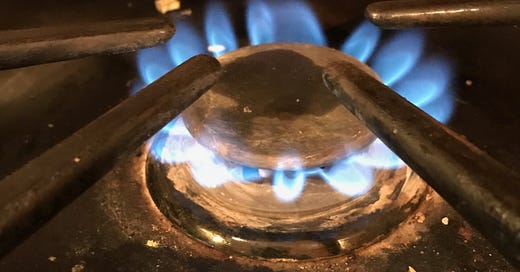



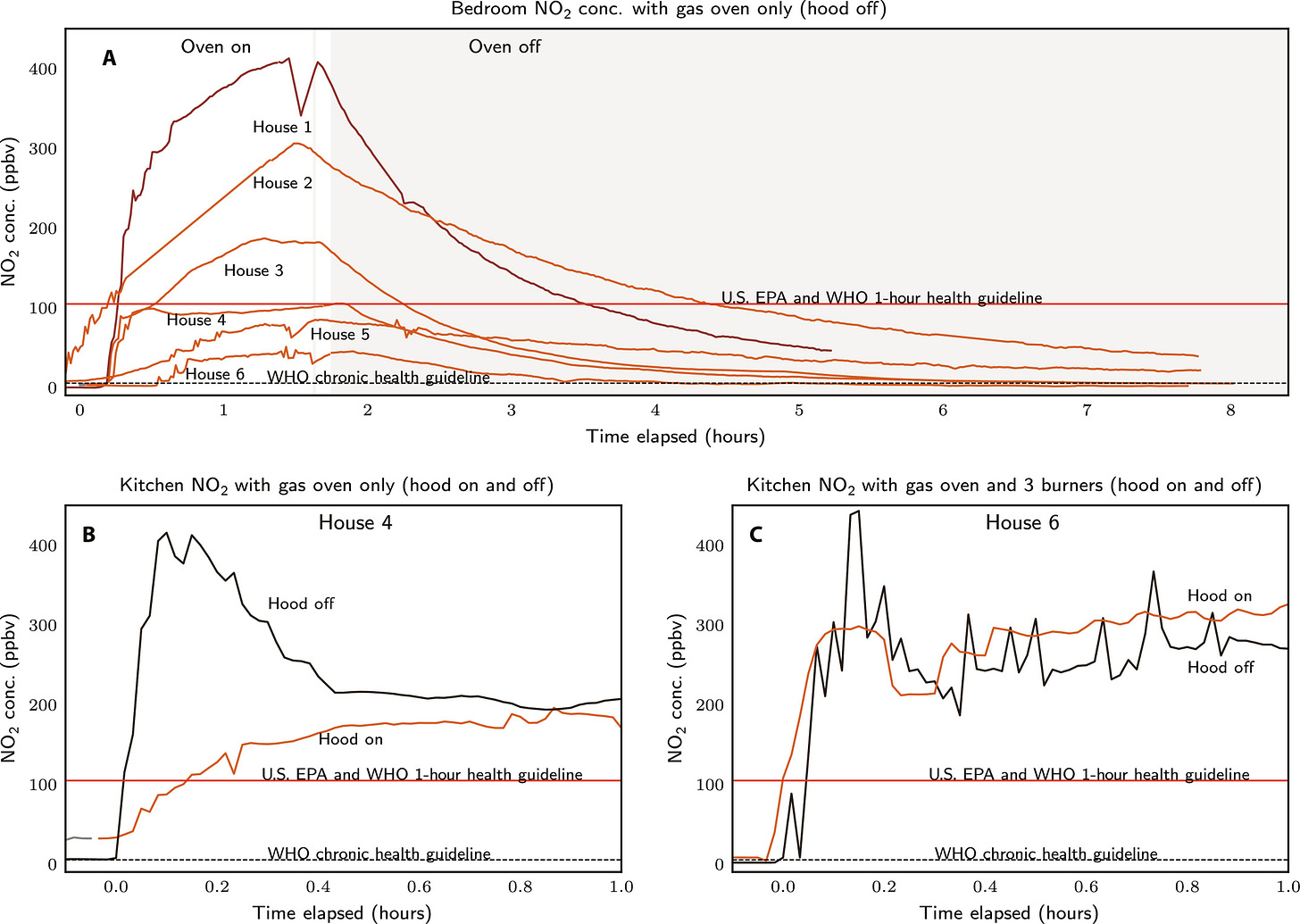
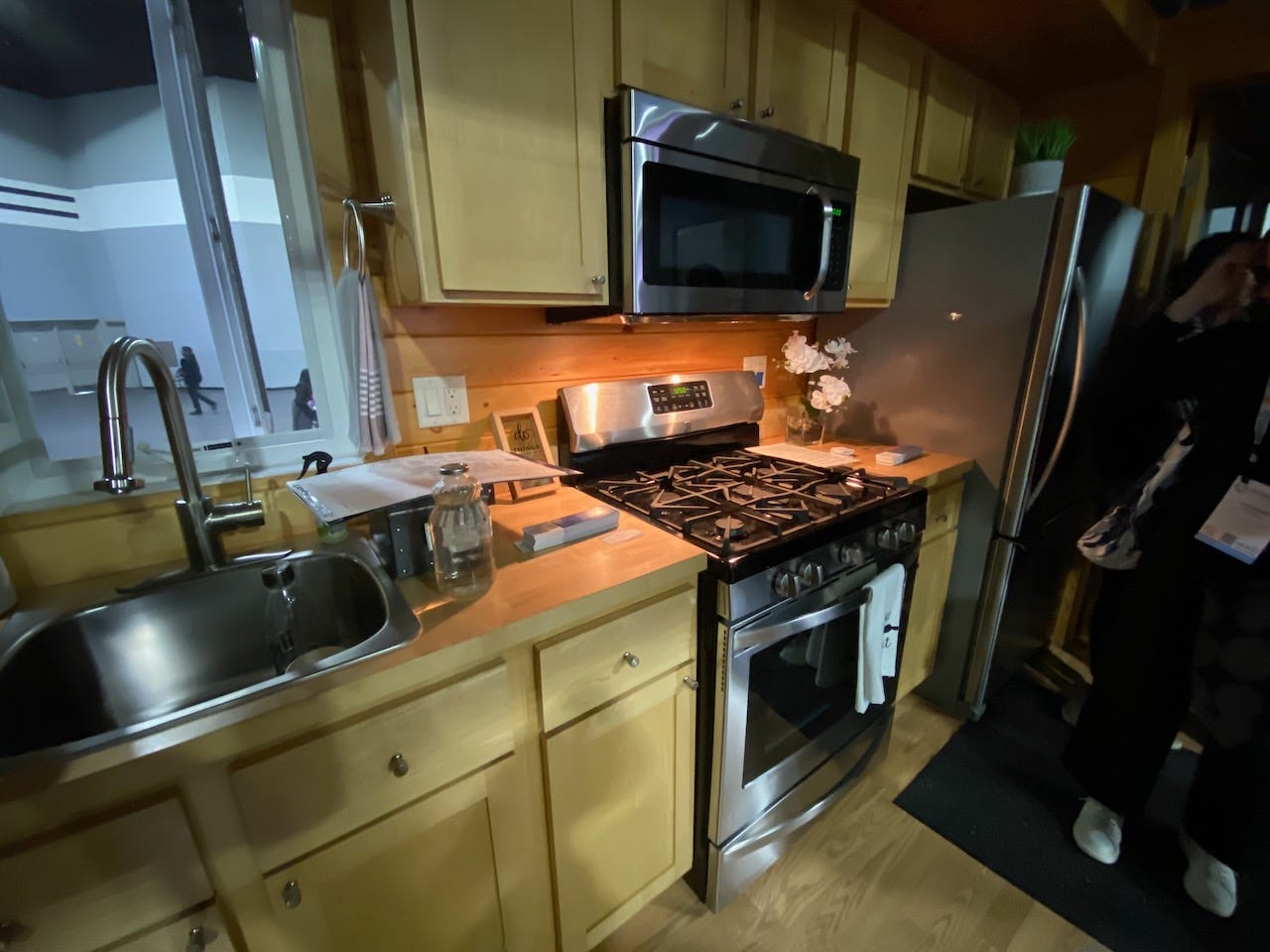

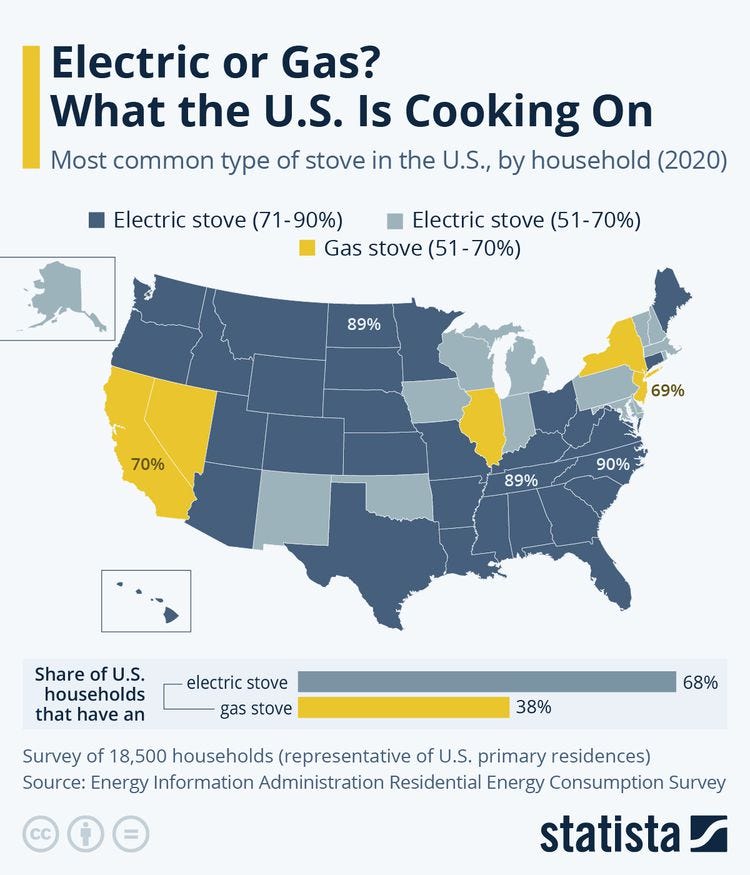
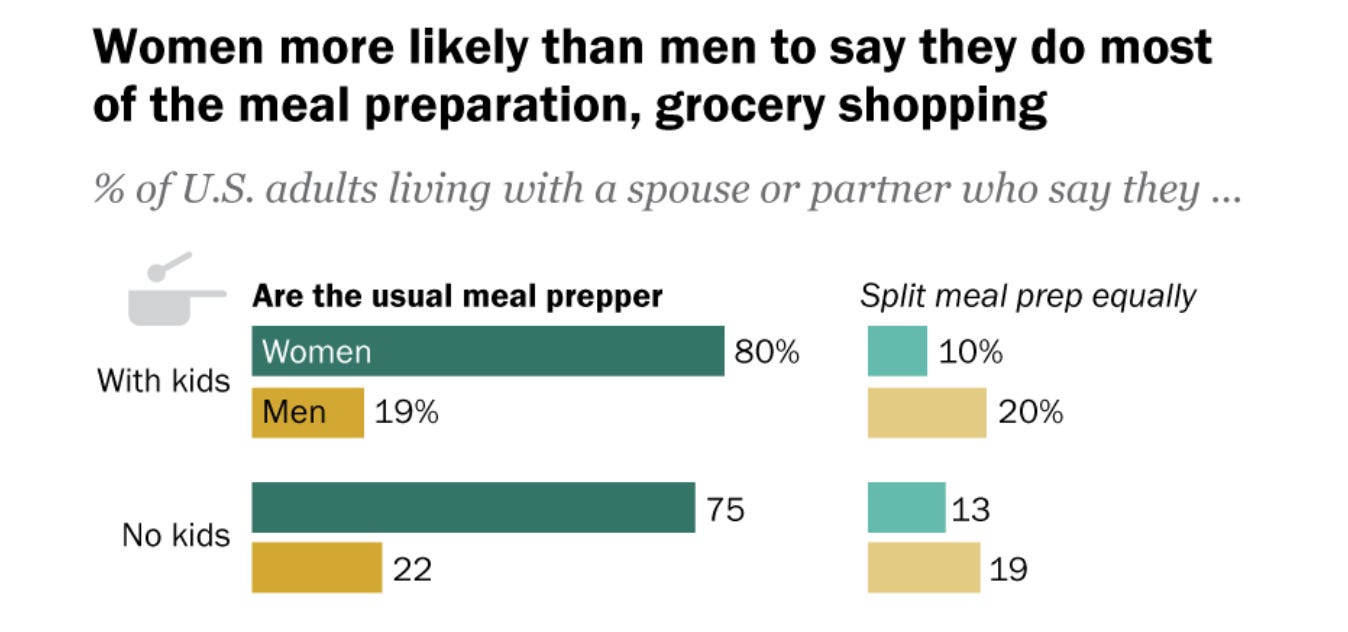

Some quick internet searching for this data:
-15% of US homes use gas stoves, with 47 million stoves.
-Of total US natural gas consumption, 2.8% is used for residential cooking.
-Residential use of natural gas is 15% of overall usage.
-Cooking with gas thus emits .2% of US carbon emissions.
At Lloyd's costs of installing his stove:
-Converting to US dollars: $2520 to install new stove
-Extrapolated to overall US, it would cost $118 billion to save .2% of US carbon emissions
If each stove weighs 200 pounds, you'd have 9.4 billion pounds of stoves to haul away and melt down, taking further carbon emissions, not to mention the embedded emissions of making and transporting the new stoves, as well as eventually pulling out all the gas lines and recycling them, and also mining the copper for all that heavy-duty new wiring and other power supplies.
Is the the best usage of resources?
My apologies if this data is inaccurate, but I'm pressed for time today and couldn't do multiple searches. But, this conveys my general concern.
We switched from a gas range to an electric induction range last month. I'm an excellent and avid cook and I'm completely delighted. It's a very cool piece of technology and EXTREMELY responsive. And a lot simpler to use and clean. If women and men who actually cook were driving the conversation, and had the chance to try induction, there would be no argument for keeping gas. Granted, we had enough electric capacity to add a circuit for it and our pots and pans worked for induction burners.